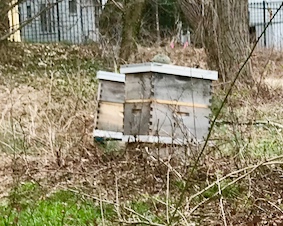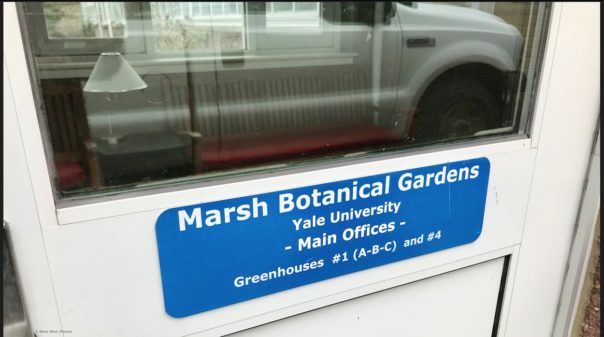Natural History & Time in Connecticut: O. C. Marsh and YPMNH
Editor's note: This story has been archived; a portion included in a newer feature is linked here. A visit to Yale Peabody Museum of Natural History (2019) link. YPMNH is now closed for an expansion. If visiting the area, call ahead for information to avoid disappointment during the current pandemic.
Tours are self guided; visitors must be buzzed in to view the greenhouse collections, which include carnivorous plants, succulents, cacti, orchids, grasses, tropical plants with culinary appeal. Cycads, palms (the corresponding fossil records that can be seen at Yale Peabody make for an interesting contrast to these living specimens.) Artists, gardeners, scientists, botanists, and curious travelers will find a treasure trove of wonders cultivated and growing here.
“We offer space, supplies and growing expertise to research laboratories from any department at Yale, but principally involved with Molecular, Cellular and Developmental Biology (MCDB), Ecology and Evolutionary Biology (EEB) and School of Forestry and Environmental Studies (F&ES).”
Visitors are welcome to explore Monday through Friday between 9 a.m. and 4 p.m. Note that at times that “some of our greenhouse space will be closed to accommodate classes, so please check our calendar for more information. We have also been utilized by sculpture and art classes, mid- to upper-level language classes who visit our gardens for practical language use and study and others.”
Beehives are tucked into a quiet corner so these important pollinators can do their work. There is great beauty alongside collections that serve as a resource for research science.
Directions: “By entering the address (265 Mansfield Street, New Haven, CT 06511), all GPS systems will bring you to our door. For those who know Yale and New Haven, Mansfield Street is parallel to and to the west of Prospect Street and Whitney Avenue, two major north-south arteries for Yale and the Science Hill area. At the corner of Prospect Street and Hillside Place, turn west on Hillside, going down the hill one block to Mansfield, and turn right. The first opening in the fence on the right is marked by our sign. A pedestrian entrance to our garden is a gap in the hedge at the corner of Prospect Street and Hillside Place. The gap is just to the north of the intersection, where the yew hedge ends next to a buckeye tree (Aesculus species). Follow the path towards Greeley Memorial Laboratory, but head down the hill to the greenhouses below. The entrance is on the far side of the greenhouse complex.”






